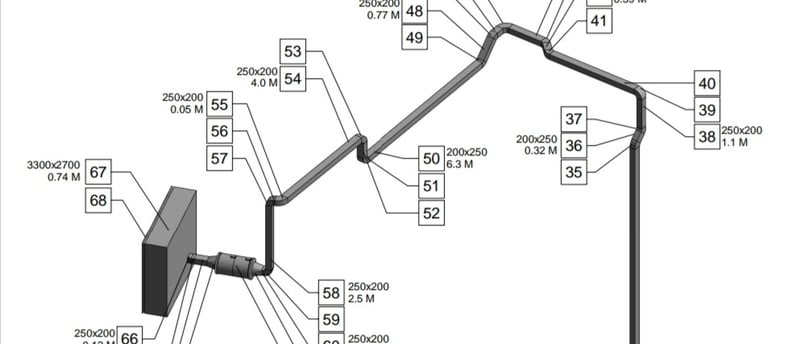A Comprehensive Guide on the Procedure for ESP Calculation of Fans
12/3/20242 min read


Introduction to ESP Calculation
The Effective Static Pressure (ESP) calculation of fans is a crucial aspect of fan performance evaluation and system design. It plays a pivotal role in determining how efficiently a fan can move air through a ventilation or industrial system. Understanding the methodology behind this calculation is essential for engineers and architects who want to optimize air movement within a given environment.
The Key Variables in ESP Calculation
Several factors influence the ESP calculation, including the fan's design, air density, and the system's resistance to air movement. Typically, the ESP is calculated using the formula:
ESP = Total Pressure - Velocity Pressure
Where Total Pressure comprises the static pressure and dynamic pressure, while Velocity Pressure is derived from the velocity of the airflow through the fan. It is essential to understand each component of this equation to perform accurate calculations.
The Step-by-Step Procedure for ESP Calculation
To carry out the ESP calculation effectively, one should follow these systematic steps:
Determine the Total Pressure: Utilize a manometer or other measurement tools to ascertain the total pressure generated by the fan when operational.
Measure the Velocity Pressure: Use a Pitot tube to measure velocity pressure at the fan outlet. Ensure that the readings are taken in different positions to capture variations in flow.
Find Static Pressure: Subtract the velocity pressure from the total pressure. The resulting figure represents the static pressure, integral for evaluating fan performance.
Calculate the ESP: Insert the determined static pressure back into the equation to find your ESP. Consider the system design specifications while interpreting these measurements.
Keep in mind that accurate ESP calculations hinge on precise measurements and an understanding of airflow dynamics. Engineers must consider all variables, including temperature and humidity, as these can affect air density and thus influence the ESP value.
Conclusion
The procedure for ESP calculation of fans is fundamental for anyone involved in HVAC or ventilation systems. By mastering the components of the ESP equation and following a well-defined calculation process, professionals can improve their system designs, leading to enhanced energy efficiency and better airflow management. Continual learning and focus on accuracy remain paramount in performing these calculations effectively.
